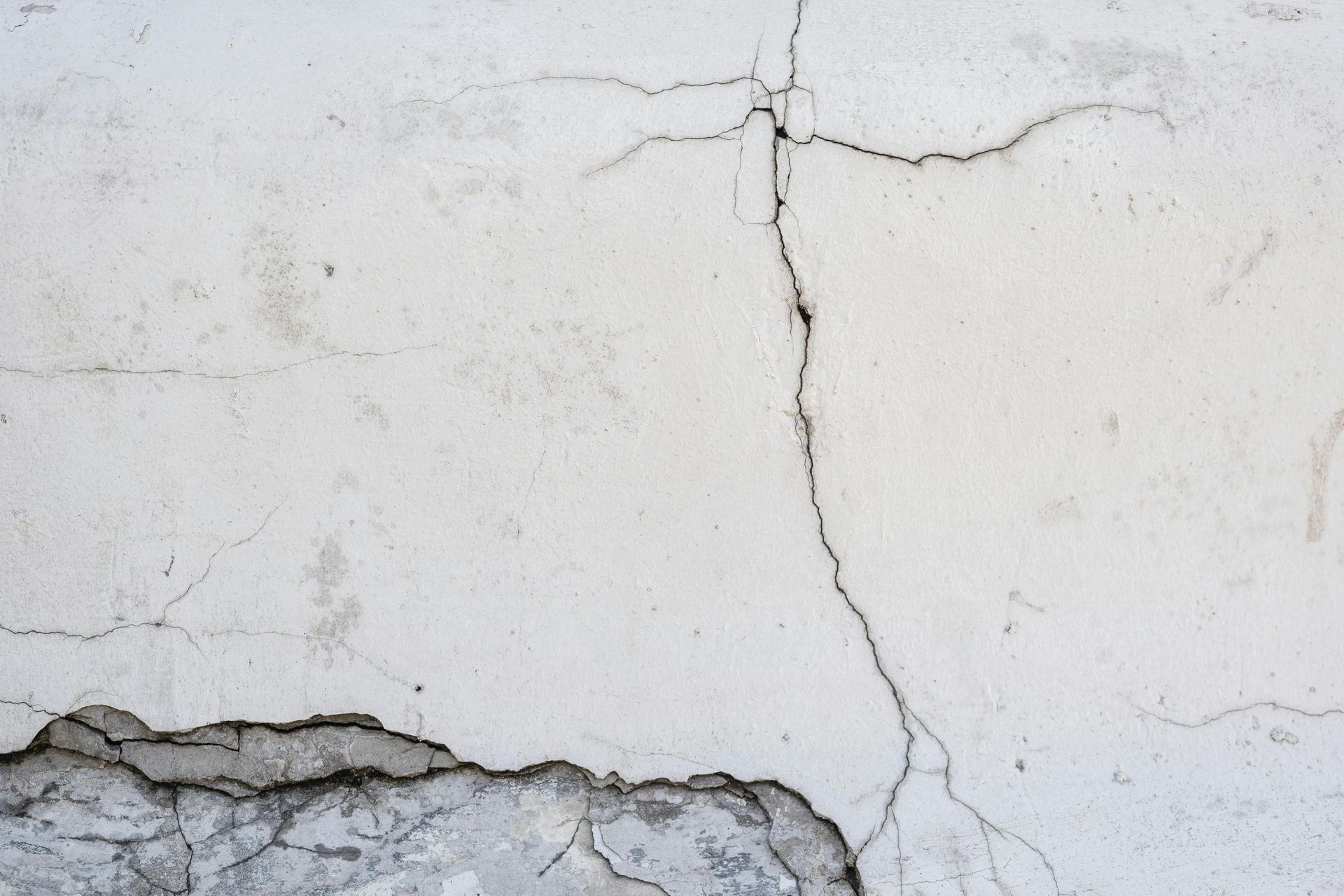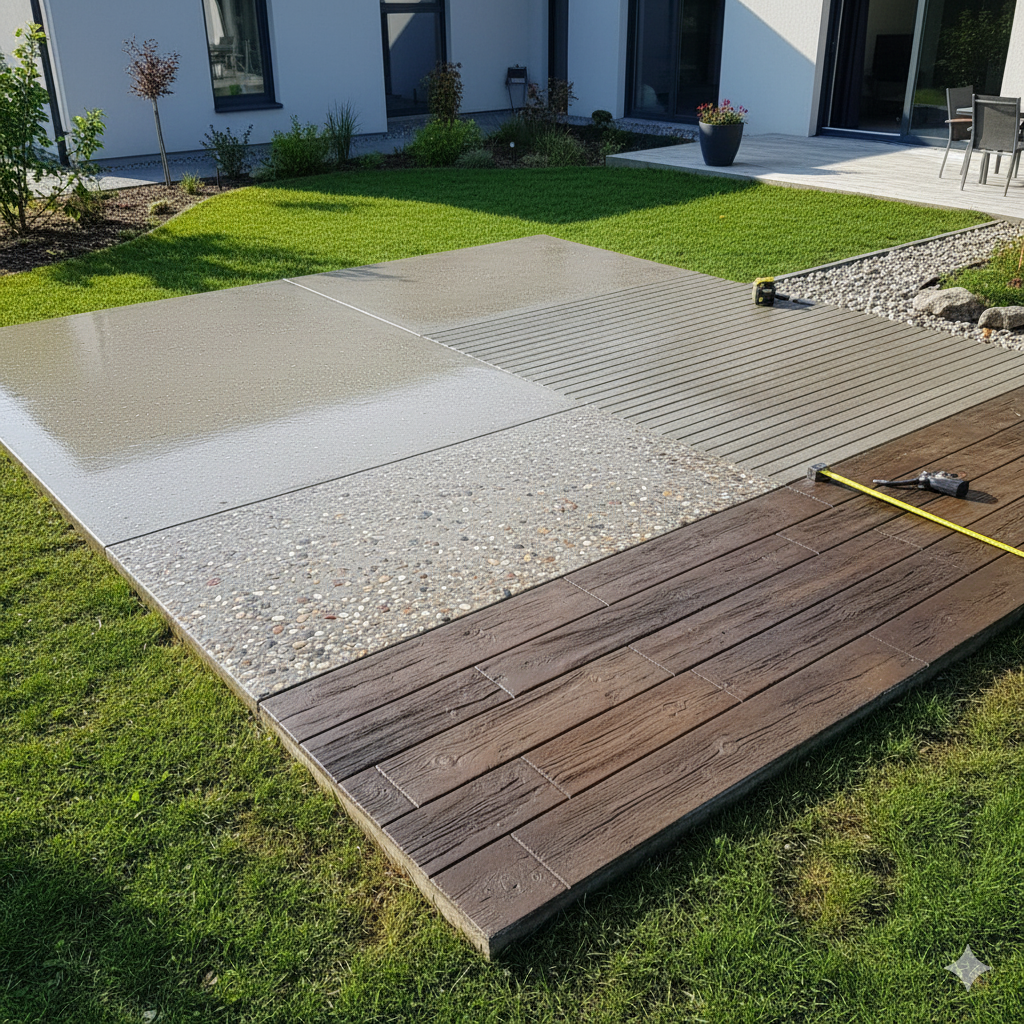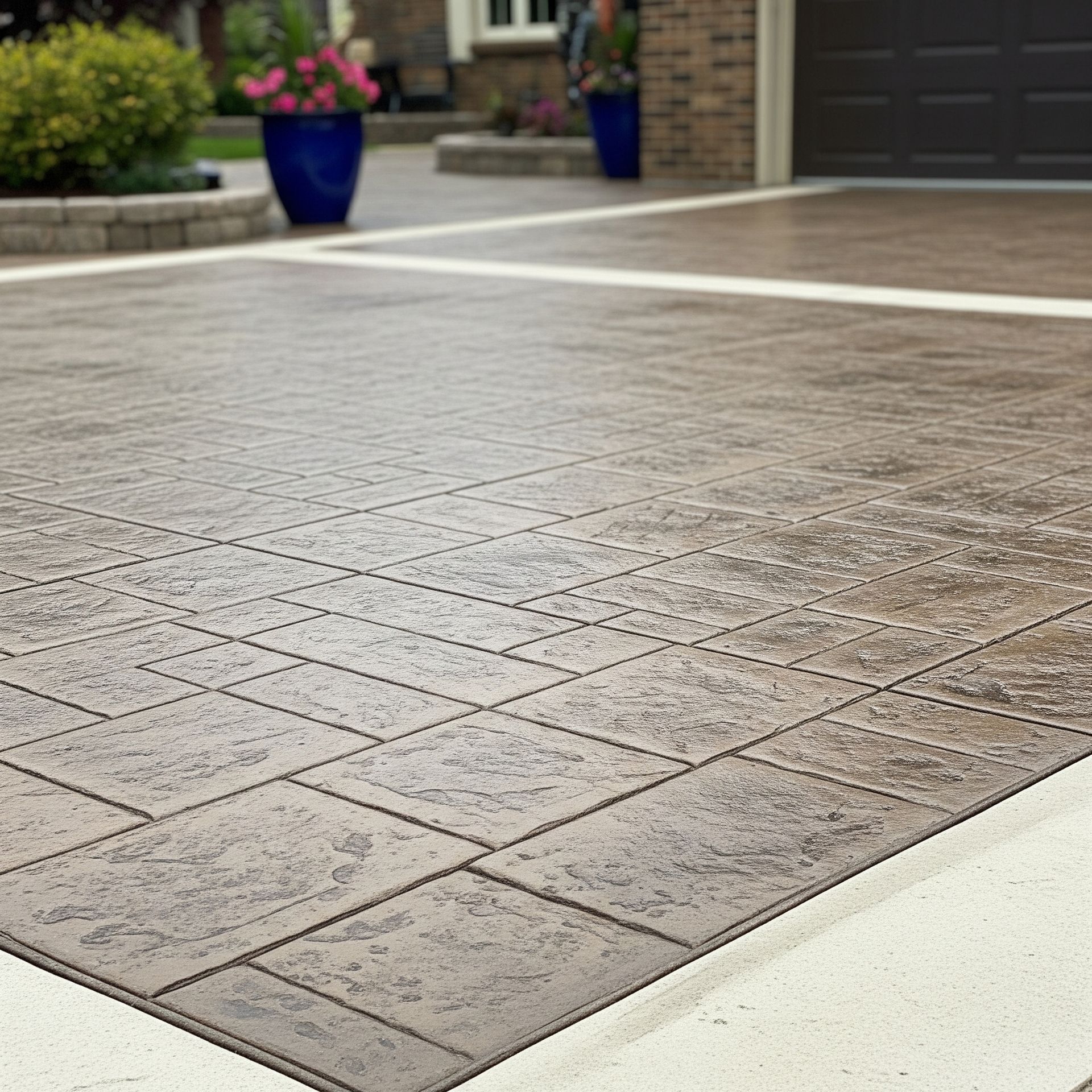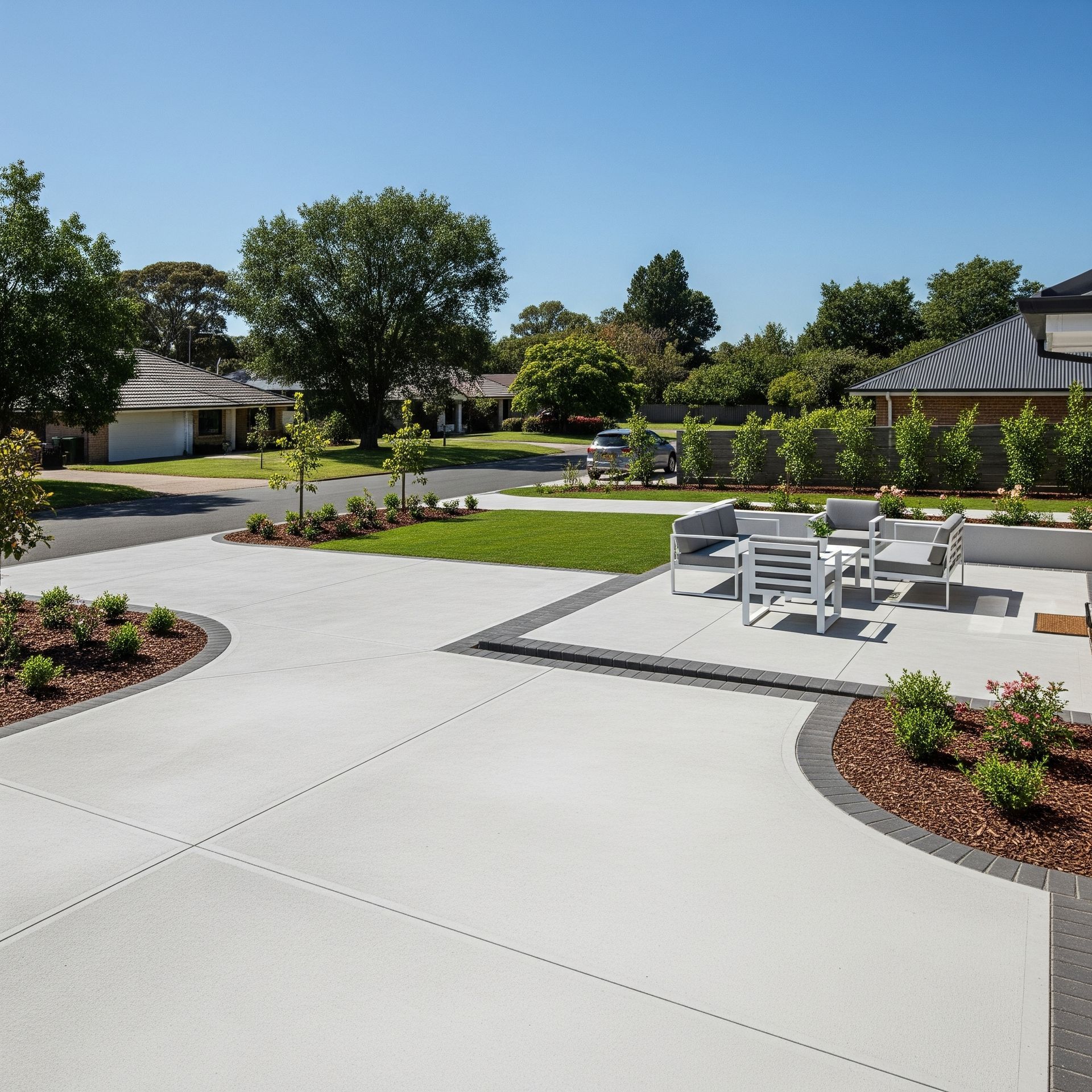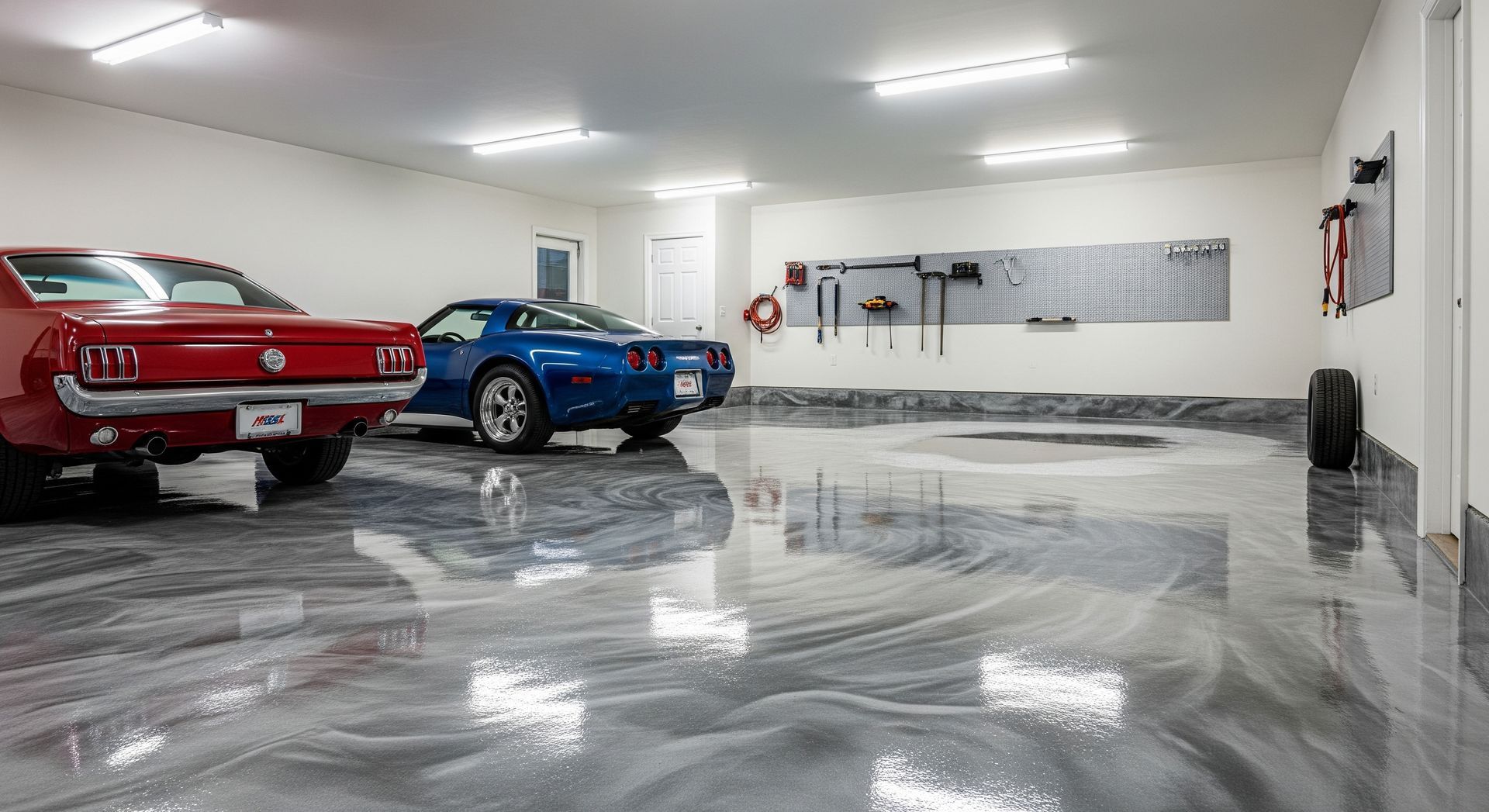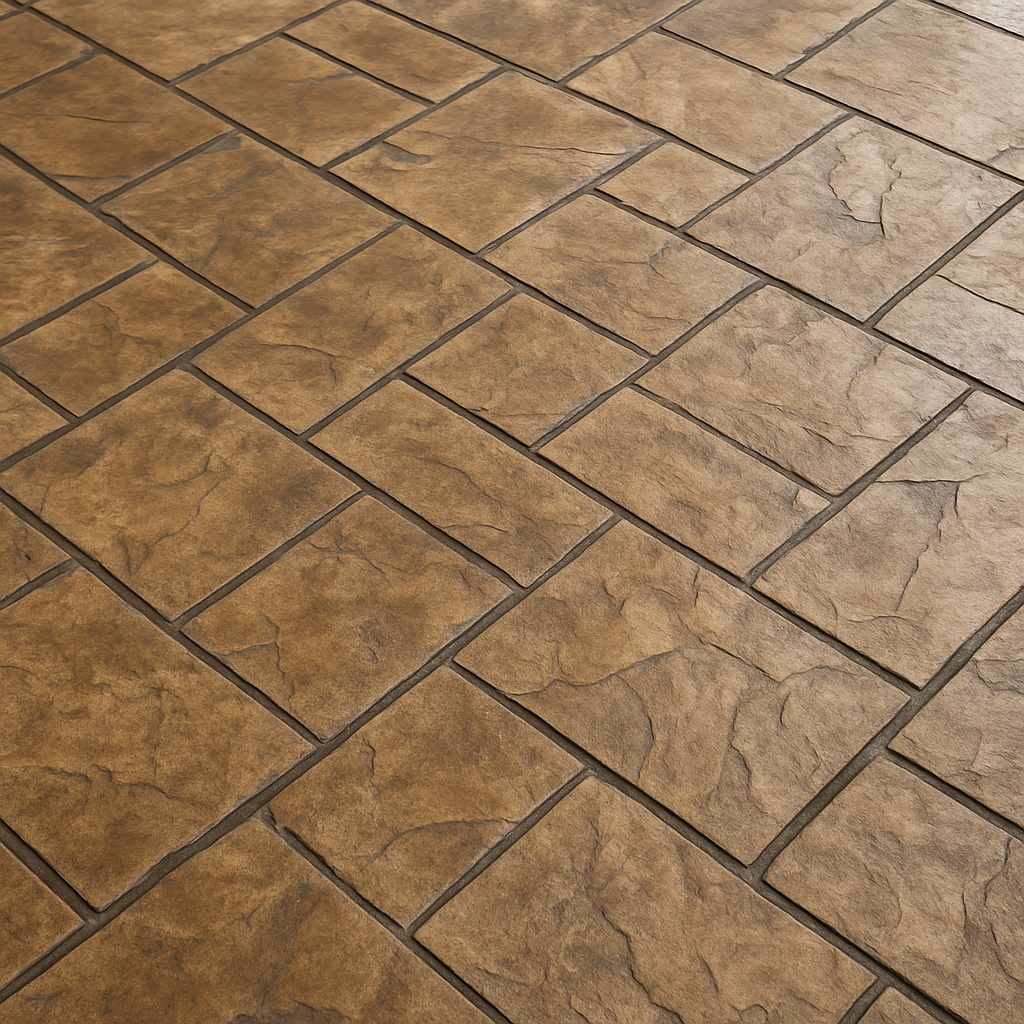Hiding Stains from Oak Trees and Black Olive Trees
Key Takeaways
- Act fast: Fresh stains are 10x easier to remove than set-in marks that have penetrated concrete
- Start gentle: Use vinegar solutions before escalating to pressure washing or chemical treatments
- Seal annually: Penetrating sealers block tannins and reduce future staining by up to 90%
- Prune strategically: Regular trimming cuts leaf drop by 30% and reduces sap production
- Test first: Always try cleaners on small, hidden areas to avoid damaging or discoloring surfaces
- Layer your protection: Multilayer sealers on driveways provide the strongest defense against recurring stains
- Stay consistent: Weekly maintenance prevents buildup that becomes permanent over time
Understanding What Causes Tree Stains
To effectively hide stains, you first need to understand where they come from. Oak trees and black olive trees create distinctly different types of damage, each requiring specific treatment approaches.
Oak Tree Stains
Oak trees produce tannins, which are natural compounds found in their leaves, bark, and acorns. When these materials fall on wet concrete or stone, tannins leach out and create dark brown or black spots. This process accelerates in humid climates or during heavy rains, where moisture pulls the compounds deeper into the material.
What makes oak stains worse:
- Oak sap creates sticky residue that traps dirt and hardens into glossy films
- Acorns decompose on concrete, releasing both tannins and organic acids that etch surfaces
- Acidic soils increase tannin release, intensifying staining
- Stressed trees from drought or disease produce excessive defensive sap
Black Olive Tree Stains
Black olive trees present a different challenge altogether. These tropical natives shed leaves constantly, but the real troublemaker is the black olive looper caterpillar. These pests drop frass, which is digested waste that appears as tiny black pellets. When mixed with rain, this frass forms rusty, ink-like stains on everything below.
Why black olive stains persist:
- Frass contains high iron levels from caterpillar digestion, creating rust-like discoloration
- Unlike oak tannins that fade, iron-based stains intensify with oxidation
- Mite galls (abnormal growths caused by eriophyid mites feeding on leaf tissue) produce stringy, resinous debris that adheres stubbornly to surfaces and leaves dark residue when decomposed
- Year-round leaf drop means constant exposure to staining materials
Both stain types thrive on porous materials like concrete driveways, which absorb them like a sponge. Understanding these basics helps you choose the right cleaning approach and prevents wasted effort on methods that won't work for your specific stain type.
Preventing Stains Before They Start
Prevention always beats cleanup when dealing with oak trees and black olive trees. A multi-pronged approach addressing tree placement, maintenance, and physical barriers delivers the best results.
Smart Planting and Pruning
| Strategy | Timing | Expected Result |
|---|---|---|
| Plant trees 20+ feet from hardscapes | Before planting | Eliminates direct drop zone |
| Prune oak trees | Late winter | Reduces sap flow and leaf litter by 30% |
| Prune black olive trees | Dry seasons | Minimizes pest activity |
| Remove deadwood and thin canopy | Annually | Improves air circulation, reduces stress |
| Trim overhanging branches | As needed | Prevents direct debris contact |
Pest Management for Black Olive Trees
The looper caterpillars peak during warmer months, so watch for webbing or frass accumulation. Control options include:
- Trunk injections: Abamectin applied in early spring disrupts caterpillar life cycles
- Biological controls: Release parasitic wasps or apply Bacillus thuringiensis (Bt)
- Monitoring: Weekly inspections during warm months catch infestations early
Physical Barriers and Water Management
Creating barriers between trees and hardscapes intercepts debris before it causes stains:
- Mulch layers: Apply 3 inches of cedar or hardwood mulch under trees to catch falling leaves
- Gravel strips: Install along driveway edges to intercept stains
- Permeable pavers: Create buffer zones that absorb and filter debris
- French drains: Redirect water flow away from stained areas
- Soil aeration: Annual aeration promotes healthy roots and reduces stress-induced leaf drop
Maintenance schedule: Rake weekly during peak seasons, daily directly under canopies during heavy drop periods. These adjustments can reduce stain incidents by 50% over a single season.
Cleaning Concrete Driveways and Patios
Concrete surfaces suffer the most visible damage from tree stains. Success depends on matching the cleaning method to the stain's age, type, and severity.
Gentle Methods for Fresh Stains
Start with the least aggressive approach and escalate only if needed:
Vinegar solution (best for new tannin stains):
- Mix equal parts white vinegar and water in a pump sprayer
- Spray liberally on stains and let sit 10 minutes
- Scrub with stiff nylon brush
- Rinse thoroughly with garden hose
- Add 1 tablespoon dish soap for tougher spots
Baking soda paste (ideal for rust-colored black olive stains):
- Combine 2 parts baking soda, 1 part hydrated lime, and water to form thick paste
- Apply generously to stains
- Cover with plastic wrap to retain moisture for 24 hours
- Scrub vigorously and rinse completely
Moderate to Heavy Stain Removal
| Cleaning Method | Best For | Application Time | Key Benefits |
|---|---|---|---|
| Hydrogen peroxide (3%) + corn starch | Set-in oak sap | 2-4 hours | Safe oxidation of organic matter |
| Oxalic acid (1 lb per gallon) | Persistent tannins | 15-20 minutes | Professional-grade tannin dissolution |
| Trisodium phosphate (TSP) solution (1 cup per gallon) | General heavy staining | 15 minutes pre-treat | Enhanced pressure washing results |
| Pressure washing (1500-2000 PSI) | Large stained areas | 1-2 hours | Most dramatic results for aged stains |
Pressure Washing Best Practices
When gentle methods fail, pressure washing delivers dramatic results:
- Use 25-degree or wider tip for even pressure distribution
- Maintain wand 12 inches from surface
- Work in overlapping sections to prevent streaking
- Pre-treat stains with TSP or oxalic acid for 15 minutes
- Test inconspicuous corner first at lower pressure
Critical cleaning tips:
- Avoid bleach on colored concrete as it creates uneven lightening that is worse than original stains
- Wet edges around stains first to contain cleaning solutions
- Clean on overcast days so solutions don't evaporate prematurely
- Squeegee or towel-dry after cleaning to prevent new water spots
- Always neutralize acid cleaners with baking soda solution (1 cup per gallon)
Protecting Surfaces with Sealers
Applying protective sealers creates a lasting shield against recurring stains from oak trees and black olive trees. Think of sealers as invisible raincoats that fill concrete pores and force liquids to bead up on the surface.
Sealer Types and Applications
Penetrating sealers (silane/siloxane):
- Sink 1/4 inch or more into concrete
- Repel water and tannins without changing appearance
- Last 3-5 years
- Reduce staining by up to 90%
Application process:
- Clean surface thoroughly and allow 24 hours drying time
- Apply two coats with roller or sprayer, 4 hours apart
- First coat penetrates deeply; second fills surface pores
- Allow 48 hours cure time before vehicle traffic
Multilayer Sealers on Driveways
For high-traffic areas and severe staining problems, layered protection offers superior results:
| Layer | Product Type | Function | Reapplication |
|---|---|---|---|
| Base | Silane/siloxane penetrating sealer | Water repellency, tannin blocking | Every 4-5 years |
| Topcoat | Acrylic sealer | UV resistance, abrasion protection | Every 2 years |
Recommended brands: RadonSeal, Foundation Armor, Ghostshield offer complete kits ($150-300 for a two-car driveway).
Application Conditions and Testing
Ideal conditions:
- Temperature: 50-85 °F
- Humidity: Below 80%
- Weather: 48 hours dry before and after application
- Season: Late April-May or September-October in most climates
Always test first: Apply to a small, hidden area (garage wall corner) to check the sealers’ appearance and compatibility. Some sealers slightly darken concrete or emphasize aggregate patterns.
Frequently Asked Questions
How often do black olive oak trees leave stains?
Stains appear most frequently during rainy seasons from spring through fall, with black olive trees peaking May-October when caterpillar activity intensifies. Regular weekly raking prevents debris accumulation, with daily sweeping recommended directly under canopies during peak drop periods.
Can I use bleach to clean oak tree tannin stains?
Diluted bleach (1:3 with water) works on plain concrete but risks fading colored surfaces and only lightens stains temporarily rather than dissolving tannin compounds. Oxalic acid provides safer, more permanent results by actually breaking down tannins instead of just bleaching them.
What is the best time to apply multilayer sealers on driveways?
Late April through May and September through October offer ideal conditions with temperatures between 50-85°F and low humidity. Proper timing ensures even coverage and maximum longevity—rushed applications during poor weather cause most sealer failures.
Do pressure washers damage concrete when removing tree stains?
When used correctly at 1500-2000 PSI with a 25-degree tip held 12 inches away, pressure washers won't damage properly cured concrete in good condition. Always test an inconspicuous corner first and reduce pressure if you see aggregate exposure or surface pitting.
Are there natural alternatives to chemical sealers for patios?
Linseed oil penetrates surfaces while repelling water naturally, though it requires reapplication every 3-4 months compared to synthetic sealers' multi-year protection. Sodium silicate (water glass) offers a mineral-based option that reacts with concrete to create a harder, more stain-resistant surface.
Final Thoughts
Managing stains from oak trees and black olive trees requires a combination of proactive prevention, regular maintenance, and strategic protection. By understanding what causes these persistent marks and implementing the right cleaning techniques, you can keep your outdoor spaces looking fresh without constant struggle.
For deep-set stains or professional sealer application, contact our experienced concrete team today for a free consultation and expert surface restoration.
References:
https://www.rainbowecoscience.com/treatment-guides/insects-mites/black-olive-caterpillar?srsltid=AfmBOoqZJFEm_q7CaG8RLwl9VCMITZK7Bzwg6Zu6ANHFeymeYlvSy0YD
https://npic.orst.edu/ingred/bt.html

